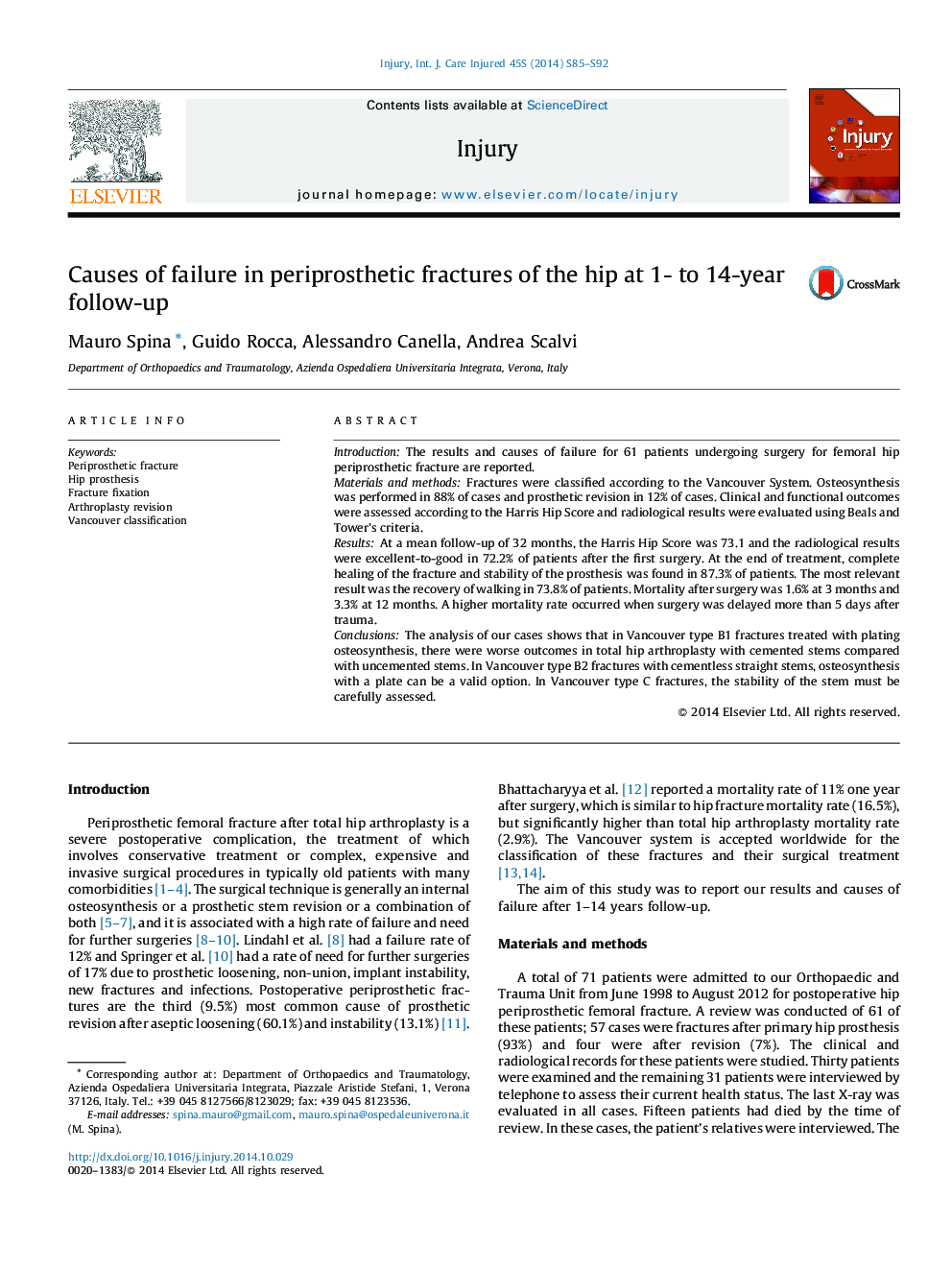| کد مقاله | کد نشریه | سال انتشار | مقاله انگلیسی | نسخه تمام متن |
|---|---|---|---|---|
| 3239730 | 1206017 | 2014 | 8 صفحه PDF | دانلود رایگان |
IntroductionThe results and causes of failure for 61 patients undergoing surgery for femoral hip periprosthetic fracture are reported.Materials and methodsFractures were classified according to the Vancouver System. Osteosynthesis was performed in 88% of cases and prosthetic revision in 12% of cases. Clinical and functional outcomes were assessed according to the Harris Hip Score and radiological results were evaluated using Beals and Tower's criteria.ResultsAt a mean follow-up of 32 months, the Harris Hip Score was 73.1 and the radiological results were excellent-to-good in 72.2% of patients after the first surgery. At the end of treatment, complete healing of the fracture and stability of the prosthesis was found in 87.3% of patients. The most relevant result was the recovery of walking in 73.8% of patients. Mortality after surgery was 1.6% at 3 months and 3.3% at 12 months. A higher mortality rate occurred when surgery was delayed more than 5 days after trauma.ConclusionsThe analysis of our cases shows that in Vancouver type B1 fractures treated with plating osteosynthesis, there were worse outcomes in total hip arthroplasty with cemented stems compared with uncemented stems. In Vancouver type B2 fractures with cementless straight stems, osteosynthesis with a plate can be a valid option. In Vancouver type C fractures, the stability of the stem must be carefully assessed.
Journal: Injury - Volume 45, Supplement 6, December 2014, Pages S85–S92
